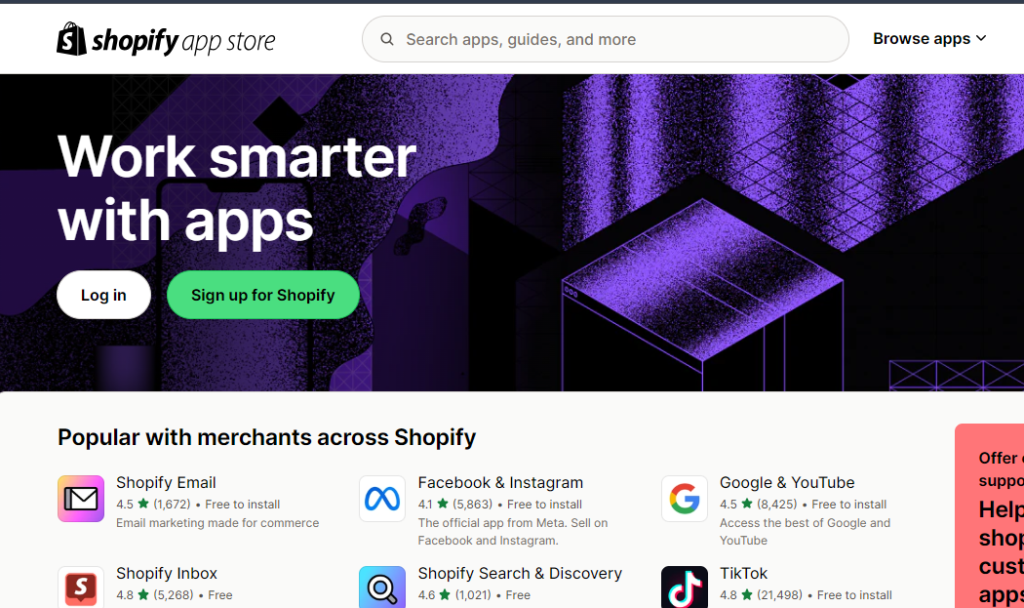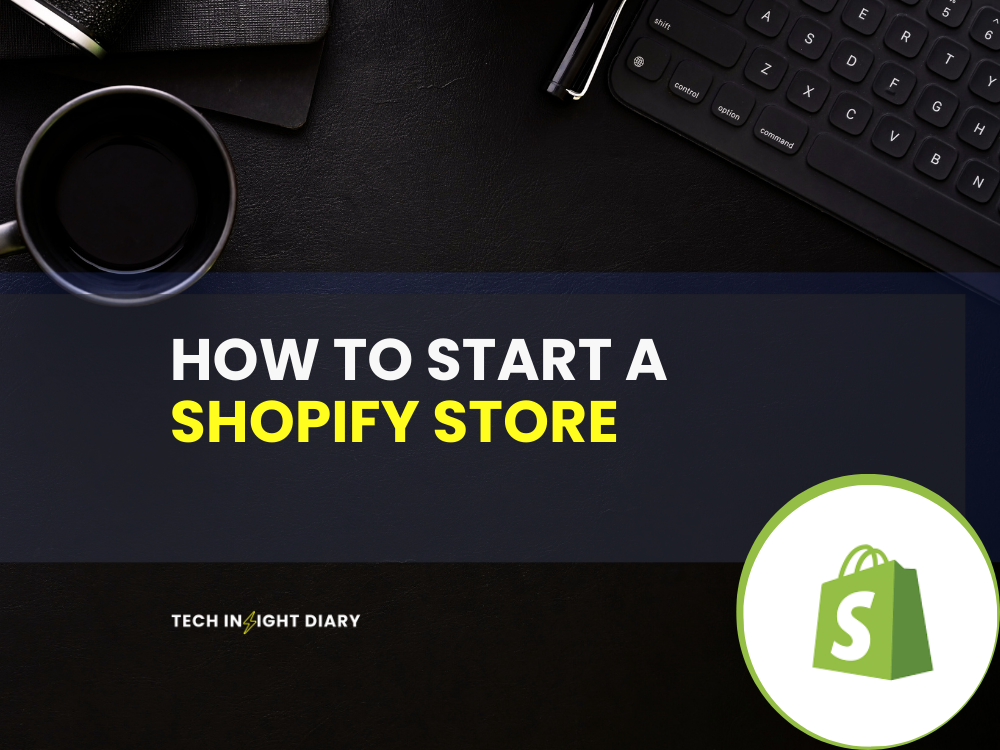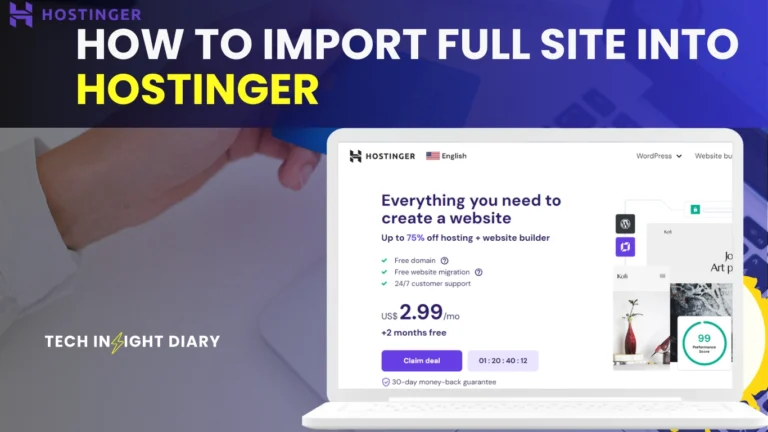To start a Shopify store, sign up on Shopify’s website and choose a plan that fits your needs. Customize your store by selecting a theme and adding your products.
Starting a Shopify store is a straightforward process that can help you launch your online business quickly. Shopify provides an intuitive platform with various tools and features to support your e-commerce venture. Begin by signing up on Shopify’s website, where you can choose from different plans based on your business needs.
Once registered, customize your store by selecting a theme that matches your brand and adding products with detailed descriptions and images. Shopify also offers integrations with various payment gateways, making it easy to manage transactions. With these steps, you are well on your way to running a successful online store.
Introduction To Shopify
Starting an online store can be challenging. Shopify makes it easier. This guide will help you understand Shopify. Learn why it is a popular choice for many.
What Is Shopify?
Shopify is an e-commerce platform. It lets you create online stores. You can sell products to customers worldwide. Shopify offers a range of tools. These tools help you manage your store efficiently.
Shopify is user-friendly. Even beginners can use it. You can customize your store. Use different themes and plugins to enhance your store. Shopify handles the technical side. This allows you to focus on your business.

Why Choose Shopify?
There are many reasons to choose Shopify:
- Ease of Use: Shopify is easy to set up and use.
- Customization: Many themes and plugins are available.
- Support: Shopify offers 24/7 customer support.
- Security: It provides secure payment options.
- Scalability: Shopify can grow with your business.
| Feature | Description |
| Ease of Use | Simple setup and management |
| Customization | Wide range of themes and plugins |
| Support | 24/7 customer assistance |
| Security | Secure payment gateways |
| Scalability | Grows with your business |
Info: How to Use Shopify? Master E-commerce in 5 Easy Steps
Planning Your Store
Starting a Shopify store requires careful planning. This ensures success in the competitive e-commerce world. Proper planning lays the foundation for your business.
Niche Selection
Choosing the right niche is crucial. It defines your store’s focus. Pick a niche that excites you. It should also have market demand. Research trends and customer needs. Use tools like Google Trends or Keyword Planner. Consider the competition. A less competitive niche can be easier to penetrate. Balance passion with profitability for the best results.
| Tool | Purpose |
| Google Trends | Analyze market trends |
| Keyword Planner | Find popular keywords |
Target Audience
Understanding your target audience is vital. They are your potential customers. Create a detailed profile of your ideal customer. Consider age, gender, location, and interests. This helps in tailoring your products and marketing.
- Age
- Gender
- Location
- Interests
Engage with your audience on social media. This builds trust and brand loyalty. Use analytics tools to track customer behavior. Adjust your strategy based on insights. Keeping your audience in mind ensures your store meets their needs.
Setting Up Your Account
Setting up your Shopify account is the first step to success. This process is simple and straightforward. It involves creating an account and choosing a pricing plan.
Creating An Account
To start, visit the Shopify website. Click on the “Get Started” button. You will need to provide your email address, password, and store name. Make sure your store name is unique and reflects your brand.
After entering your details, click “Create Your Store”. Shopify will ask some questions about your business. Answer these to the best of your ability. This helps Shopify provide better recommendations.
Choosing A Pricing Plan
Shopify offers several pricing plans. Each plan comes with different features. Here is a table summarizing the plans:
| Plan | Monthly Cost | Features |
| Basic Shopify | $29 | Basic features, 2 staff accounts |
| Shopify | $79 | Additional features, 5 staff accounts |
| Advanced Shopify | $299 | Advanced features, 15 staff accounts |
Choose a plan that fits your needs and budget. You can always upgrade later if needed.
- Basic Shopify: Best for new businesses.
- Shopify: Good for growing businesses.
- Advanced Shopify: Ideal for established businesses.
After selecting your plan, you will enter your payment details. Shopify offers a 14-day free trial. This allows you to explore features without commitment.
Once your account is set up, you are ready to start building your store. Remember to keep your login details safe. You will need them to access your store and manage your business.
Designing Your Store
Designing your Shopify store is crucial for attracting customers. A well-designed store enhances user experience and boosts sales. This section will guide you through the process.
Picking A Theme
Choosing the right theme sets the tone for your store. Shopify offers a variety of free and paid themes. These themes are customizable to fit your brand’s look and feel.
- Go to the Shopify Theme Store.
- Browse through the available themes.
- Check the reviews and ratings.
- Pick a theme that aligns with your brand.
Ensure the theme is mobile-friendly and responsive. Mobile users make up a significant portion of online shoppers. A responsive theme looks good on all devices.
Customizing Your Theme
Customization allows you to make the theme unique. It reflects your brand’s identity. Start by accessing the theme editor in Shopify.
- Go to your Shopify admin.
- Click on Online Store and then Themes.
- Click Customize next to your current theme.
Use the editor to change colors, fonts, and layouts. Add your logo and brand colors to make the store visually appealing.
| Element | Customization Tips |
| Header | Include your logo and navigation links. |
| Homepage | Showcase featured products and promotions. |
| Footer | Add contact information and social media links. |
Info: How to Dropship on Shopify? Expert Tips for Success
Use high-quality images for your products. Good images attract more customers. Write clear and concise product descriptions. This helps customers understand what they are buying.
By following these steps, you can design a Shopify store that stands out. A well-designed store leads to higher customer satisfaction and more sales.
Adding Products
Adding products to your Shopify store is crucial. It shapes customer experiences and drives sales. This section explains how to add products effectively.
Product Listings
Creating product listings is the first step. Navigate to the “Products” tab in your Shopify admin. Click on “Add product” to start.
- Enter the product title. It should be clear and concise.
- Upload high-quality images. They should showcase your product from multiple angles.
- Set the price. Ensure it reflects the product’s value.
- Choose the product type and vendor. This helps in organizing your inventory.
Use tags to categorize your product. This aids in search and filtering. Make sure your listings are accurate and appealing.
Product Descriptions
Writing effective product descriptions is essential. They should inform and entice customers.
Follow these tips for great descriptions:
- Start with a compelling headline. It should grab attention.
- Include key features and benefits. Highlight what makes your product unique.
- Use short sentences and paragraphs. This makes the text easy to read.
- Incorporate keywords. This improves your SEO rankings.
- Add a call to action. Encourage customers to make a purchase.
A well-crafted product description boosts sales. It builds trust and communicates value effectively.
Configuring Payments
Configuring payments is a vital step in setting up your Shopify store. This ensures you can accept money from customers safely. We’ll walk you through the process, including setting up payment gateways and configuring taxes.
Payment Gateways
Payment gateways allow you to accept payments online. Shopify supports many payment gateways. Popular options include PayPal, Stripe, and Shopify Payments.
- PayPal: Easy to set up and widely used.
- Stripe: Great for credit card payments.
- Shopify Payments: Simple and integrated with Shopify.
Follow these steps to configure a payment gateway:
- Go to your Shopify admin dashboard.
- Click on Settings and then Payments.
- Select your preferred payment gateway.
- Follow the setup instructions provided by the gateway.
Setting Up Taxes
Setting up taxes correctly is important. It ensures compliance with local laws. Shopify makes this process simple.
Here’s how to set up taxes:
- Navigate to the Settings tab in your Shopify admin.
- Select Taxes.
- Enter your tax rates based on your location.
For more complex tax setups, consider consulting a tax professional. It’s crucial to charge the correct tax rates to avoid issues later.
Setting Up Shipping
Setting up shipping for your Shopify store is crucial. It determines how products reach your customers. This guide will walk you through the essentials of setting up shipping zones and rates.
Shipping Zones
Shipping zones determine where you ship your products. You can create zones based on countries, regions, or specific areas.
To set up shipping zones, follow these steps:
- Go to your Shopify admin.
- Click on Settings.
- Select Shipping and delivery.
- In the Shipping section, click on Manage rates.
- Click on Create shipping zone.
Enter a name for your zone. Select the regions you want to include. Save your changes.
Shipping Rates
Shipping rates define the cost for shipping products to your customers. You can set different rates for different zones.
Here’s how to set shipping rates:
- Go to your Shopify admin.
- Click on Settings.
- Select Shipping and delivery.
- In the Shipping section, click on Manage rates.
- Select the shipping zone you want to add rates to.
- Click on Add rate.
Choose from three types of rates:
- Free shipping: No cost to the customer.
- Flat rate: A fixed cost for all orders.
- Calculated rate: Based on weight or order total.
Save your changes after adding the rates.
Launching Your Store
Launching your Shopify store is an exciting moment. You have worked hard to build your online business. Now it’s time to share it with the world. This section will guide you through the essential steps to go live. Ensure everything is perfect before you launch.
Pre-launch Checklist
Before you launch, ensure everything is in place. This pre-launch checklist will help you cover all bases.
- Test Your Store: Ensure all features work properly.
- Check Payment Gateways: Test payment options for smooth transactions.
- Review Shipping Settings: Confirm shipping options and rates.
- Check Mobile Responsiveness: Ensure your store looks great on mobile devices.
- Optimize SEO: Use keywords to improve search engine ranking.
- Set Up Analytics: Install Google Analytics to track visitors.
- Create a Backup: Save a backup of your store data.
Going Live
Now, it’s time to make your store live. Follow these steps to ensure a smooth launch.
- Remove Password Protection: Go to your Shopify admin dashboard. Navigate to Online Store > Preferences. Uncheck the password protection option.
- Set Up a Custom Domain: Purchase a domain or connect an existing one. This makes your store look professional.
- Test Final Purchases: Make a final test purchase. Ensure everything works seamlessly.
- Announce Your Launch: Use social media, email marketing, and ads. Let your audience know your store is live.
Congratulations! Your Shopify store is now live. Keep monitoring and improving it for success.
Frequently Asked Questions
How Much Does It Cost To Open A Shopify Store?
Opening a Shopify store costs $39 per month for the Basic plan. Additional costs may include apps, themes, and transaction fees.
How Do I Start Shopify For Beginners?
Sign up on Shopify’s website. Choose a plan. Customize your store using themes. Add products and set up payment options. Launch your store.
Is Owning A Shopify Store Profitable?
Owning a Shopify store can be profitable. Success depends on effective marketing, quality products, and customer engagement. Many entrepreneurs find financial success through Shopify.
Can I Start A Shopify Store With No Money?
Yes, you can start a Shopify store with no money. Shopify offers a 14-day free trial. Use this time to set up your store, list products, and begin marketing. After the trial, you will need to choose a paid plan to continue.
Conclusion
Starting a Shopify store is simpler than you think. Follow these steps, and you’ll be on your way. Your online business can thrive with the right approach. Remember to stay updated with the latest trends. Happy selling, and good luck with your new venture!




